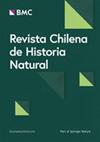Anthropogenic nesting sites and density of Burrowing Parrot (Cyanoliseus patagonus) in northern Argentinian Patagonia
IF 1.4
4区 环境科学与生态学
Q3 BIODIVERSITY CONSERVATION
引用次数: 1
Abstract
Abstract Background The expansion of human activities and the development of urban centers are among the main driving forces accounting for the transformation and loss of natural environments. At the same time, and especially for some birds, anthropogenic activity provides new habitat resources. This is the case of the Burrowing Parrot ( Cyanoliseus patagonus ), in and around Bahía Blanca, a city of ca. 335,000 inhabitants in northern Argentinian Patagonia, where urban and rural quarries and constructed ravines on roadsides are where most of its reproductive activity occurs. Methods In this study we monitored anthropogenic nesting sites and estimated the number of breeding pairs from 2018 to 2023 through censuses conducted annually in 23 colonies within a radius of up to 20 km from the communal roost located in the city. Results Most of the nesting sites (57%), and the breeding pairs (60 to 80%) were in urban environments, and the remaining in rural areas. Ravines along roadsides and quarries represented the substrate that was most frequently used for nesting. Mean nest density was significantly higher in roadside ravines compared to quarries, and, in turn, higher in urban roadsides compared to rural roadsides. Conclusion Anthropogenic substrates appear as key components for the reproduction of the species, with possible effects on its numbers. The ability of the Burrowing Parrot to reproduce on artificial substrates in the urban environment, and especially the rapid colonization of recently opened sites, represents a new perspective for the conservation and management of its populations.阿根廷巴塔哥尼亚北部穴居鹦鹉(Cyanoliseus patagonus)的人为筑巢地点和密度
人类活动的扩张和城市中心的发展是造成自然环境变化和丧失的主要驱动力。与此同时,特别是对某些鸟类来说,人类活动提供了新的栖息地资源。这是一种穴居鹦鹉(Cyanoliseus patagonus)的情况,它生活在Bahía布兰卡及其周围,布兰卡是阿根廷巴塔哥尼亚北部一个约有33.5万居民的城市,城市和农村的采石场以及路边的人工沟谷是它大部分繁殖活动发生的地方。在本研究中,我们监测了人工筑巢地点,并通过每年在距离城市公共栖息地20公里半径内的23个群落中进行普查,估计了2018年至2023年的繁殖对数量。结果绝大多数的筑巢地(57%)和繁殖对(60 ~ 80%)在城市环境中,其余在农村环境中。沿着路边的沟壑和采石场代表了最常用于筑巢的基质。与采石场相比,路边沟壑的平均巢密度显著高于采石场,而城市路边的平均巢密度也高于农村路边。结论人为底物是该物种繁殖的关键因素,可能影响其数量。在城市环境中,穴鹦鹉在人工基质上繁殖的能力,特别是在新开放的场地上的快速殖民化,代表了其种群保护和管理的新视角。
本文章由计算机程序翻译,如有差异,请以英文原文为准。
求助全文
约1分钟内获得全文
求助全文
来源期刊

Revista Chilena de Historia Natural
环境科学-生态学
CiteScore
2.50
自引率
18.20%
发文量
9
审稿时长
>36 weeks
期刊介绍:
Revista Chilena de Historia Natural (RCHN) publishes original research dealing with past and present phenomena from organismic to higher levels of biological organization, considering both empirical and theoretical studies on all kinds of taxa and environments.
The major areas covered by RCHN are: botany and zoology; physiological and behavioral ecology; population biology; community and ecosystem ecology; systematics, biogeography and evolution.
 求助内容:
求助内容: 应助结果提醒方式:
应助结果提醒方式:


